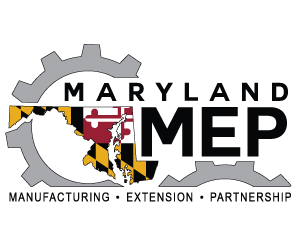It’s no secret that COVID-19 and a worldwide lockdown have wreaked havoc on supply chains across all industries—causing massive disruptions globally and locally. From news headlines warning of the impending global supply chain doom, a decrease in essential workers, a severe shortage of materials, and more, the constraints and stressors on our supply chains are at unprecedented levels. Manufacturers like you have been forced to reevaluate the way things have always been done and more importantly get creative and innovative to address current and future supply chain needs. The good news is you don’t have to figure it out alone as our team have developed some key strategies to address your company’s supply chain issues and help fix the wrench that’s been thrown into your company’s well-oiled system.
Supply Chain Optimization—Out with the Old, In with the New
Pre-pandemic, the motivation for supply chain optimization was to reduce inventory and control costs while improving the effectiveness of the overall supply chain. Today, with a lack of parts and supplies, delays in production and shipping and a shortage of critical workers to man warehouses drive trucks and support the production process, the manufacturing industry was not fully-prepared to pivot when COVID-19 struck.
Now, with some time and experience under our belts, we’re able to arm our teams with the right tools and strategies to navigate a post-pandemic world. And it starts with focusing on critical areas of the organization:
- Communication
- Planning
- Risk Mitigation
- Collaboration
- Workforce
Communication
The first step to navigating this challenging environment is to have strong, well-thought-out communication plans in place. Stay in frequent contact with both suppliers and customers and most importantly have honest conversations about scheduling and delays to better set realistic expectations. Maintain regular contact with your suppliers so you will have the best understanding of timing of shipments and orders and be prepared to be flexible with timelines. Finally, communicate delays and challenges to your team, regular communication with your workforce will help improve the culture of the organization.
Planning
In order to plan around supply chain disruptions and confidently move forward, your company has to understand the holistic view of where you fit in the supply chain. This understanding is possible through a supply chain assessment. Once you determine what’s impeding your progress, you can start to take action to address it. In this case, things like scheduling issues, delays, and increased cost of freight and shipping are what’s impeding many manufacturers’ progress. Due to these issues, it’s important to plan for the unexpected. You can do this by managing your organization’s cash flows and maintaining liquidity. It’s much easier to meet a scheduling deadline or cover a cost when you have the assets to move things along.
Risk Mitigation
When you identify possible risks, constraints, and opportunities within your company, you’re taking the next step towards effectively navigating current supply chain issues. Once you’ve identified risks, it’s possible to put a prevention and recovery plan in place. You can start by exploring opportunities for supplier diversification, reshoring or local sourcing, expanding your suppliers to include secondary sources, or coming up with alternatives you can trust to get the job done when your first line of command can’t meet your needs. Another way to reduce risks is by tracking your inventory levels and lead times. By tracking and recording this data, you’re able to improve your ability to change your ordering strategy and respond to customer demands through optimal supply solutions.
Collaboration
Your company can save a lot of time and energy and improve the quality and quantity of goods through collaboration. It might seem simple but working with other entities including partners and even competitors, can result in some highly-improved, innovative outcomes. Your organization should consider exploring avenues like group purchasing to increase purchasing power or split orders as a way to increase your importance to your suppliers. Sharing resources like warehousing, logistics and labor can improve outcomes, and the pooling of resources to address the most critical needs can create new opportunities for all organizations involved.
Workforce
A manufacturing company is only as good as its workers. COVID has magnified the challenge with identifying, recruiting and retaining qualified workers. In order to truly improve your workforce and reduce attrition, you have to understand your staffing needs and adopt and implement new strategies to address talent gaps. This may include scheduling flexibilities, competitive compensation, structured training programs, and clearly defined career paths—in order to attract new talent and keep them long term. If you provide your workers with the resources needed to be successful, encouraging leadership, and the incentives for a job well-done, you’ll most likely see a boost in productivity, job satisfaction, and retention.
At MD MEP, our goal is to support our state’s manufacturers so they can come back stronger, smarter, and more profitable than ever before. We achieve this by delivering programs and services that focus on your company’s strategy, workforce, operations, supply chain, and more. With COVID-19’s lasting impact, we understand the numerous ways supply chain challenges are hampering your operations…and we’re here to help.
Need Supply Chain Support?
To request help from our experts to evaluate, identify, and address your supply chain needs, contact us: https://mdmep.org/contact/.



